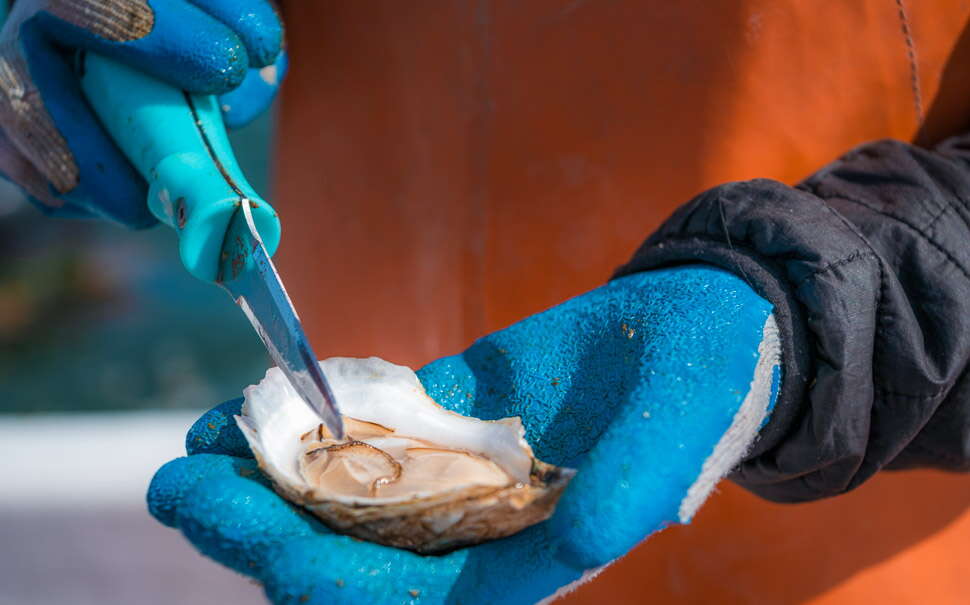
Processing Your Payment
Please do not leave this page until complete. This can take a few moments.
- News
-
Editions
View Digital Editions
Biweekly Issues
- December 1, 2025
- Nov. 17, 2025
- November 03, 2025
- October 20, 2025
- October 6, 2025
- September 22, 2025
- + More
Special Editions
- Lists
- Viewpoints
-
Our Events
Event Info
Award Honorees
- Calendar
- Biz Marketplace
Slurpin’ USA: On the water with Maine’s oyster growers
 Photo / Jim Neuger
Alicia and Amy Gaiero load a mesh bag to return oysters to the water.
Photo / Jim Neuger
Alicia and Amy Gaiero load a mesh bag to return oysters to the water.
Like lobsters, oysters used to be so abundant that their main purpose was to provide protein for the common folk. From the early days of the European settlement of North America, oystering blossomed, with New York Harbor as the epicenter. Industrialization and urbanization put an end to that.
By the early 20th century, the briny bivalves were fewer and farther between in the waters off the East Coast. It wasn’t until the 1980s that oysters enjoyed a renaissance, this time as a gourmet item farmed by small-scale producers.
Maine’s aquaculturists got in on the act. State data show that in 1986, Maine growers hauled up 130,500 pounds of oysters; by 2024, that figure had risen 40-fold to 5.2 million pounds. Oysters fetched $14.9 million on the market in 2024, making them Maine’s third-most-valuable underwater cash crop after lobsters and softshell clams, according to the state’s Department of Marine Resources.
The hardiness of the species and the purity of Maine’s waterways — made even cleaner by the natural filtration effect of oyster cultivation — contribute to optimism among producers that the niche business will continue to thrive.

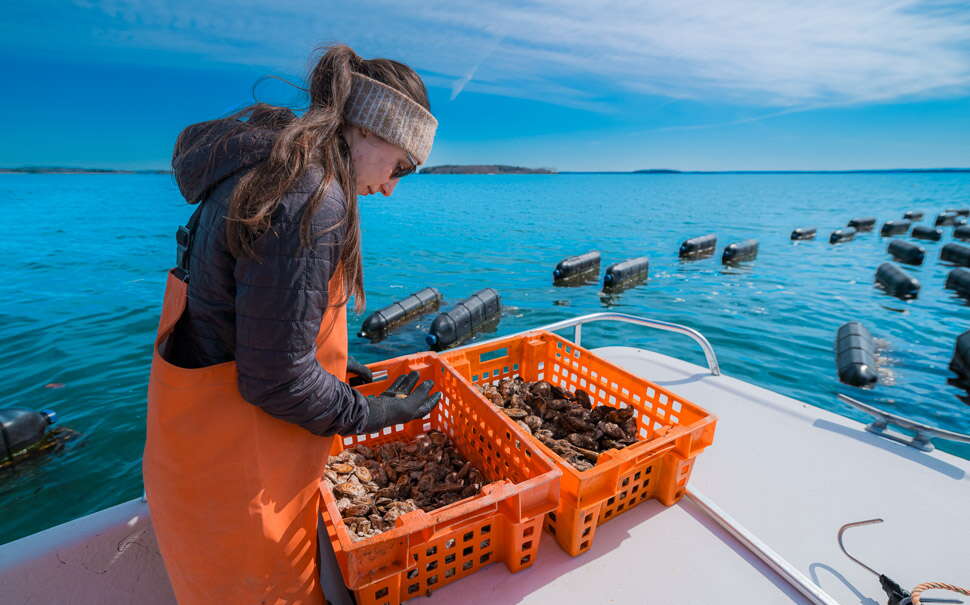
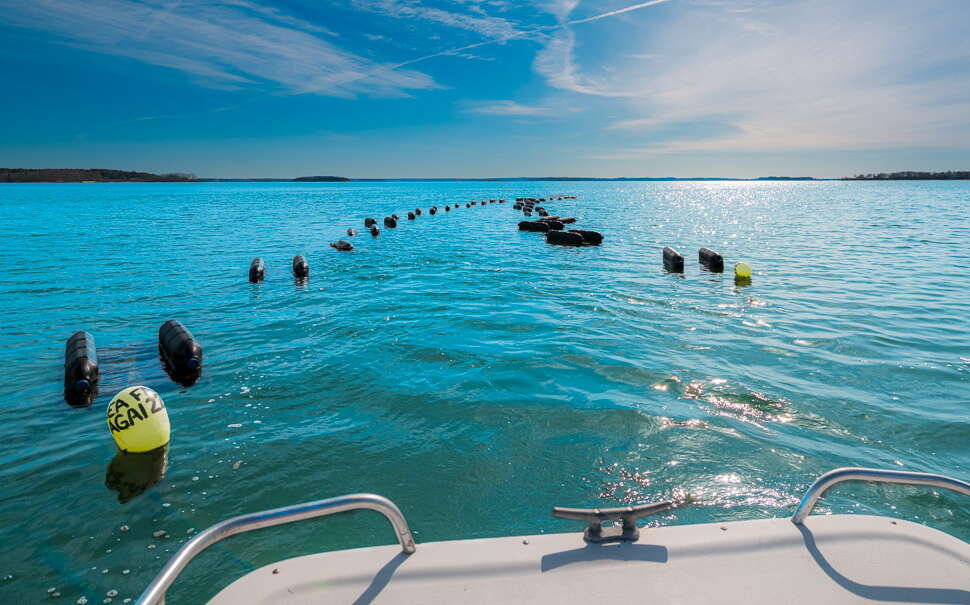
Life of brine
Similar to above-ground furry creatures, oysters doze through the winter in their undersea dwellings. Hibernation ends — and the heavy lifting for Maine’s 150-odd oyster growers begins — in the spring when water temperatures warm back up toward 40 degrees Fahrenheit. In these photos, Alicia and Amy Gaiero, two-thirds of the Nauti Sisters Sea Farm team, pay an early-season visit to one of their two oyster-growing sites, between Littlejohn and Cousins islands in Casco Bay. (The third sister, Chelsea, was away studying chemical engineering and oceanography at Northeastern University.)
Oyster cages are pulled out and ready-to-eat specimens are harvested, then the cages are flipped and dried before returning to the water. Nauti Sisters ranks as a small-scale operator, producing around 100,000 oysters a year. (The state’s giants turn out upwards of 1 million.) Alicia got into the industry after an internship with the New England Ocean Cluster. “I thought I was just going to work on a farm and the next thing I knew I was starting my own,” she says. Seasonal employees — four last year — pitch in during the summer months. The Nautis make their business even nicer by offering boat tours, oyster tastings and merch.
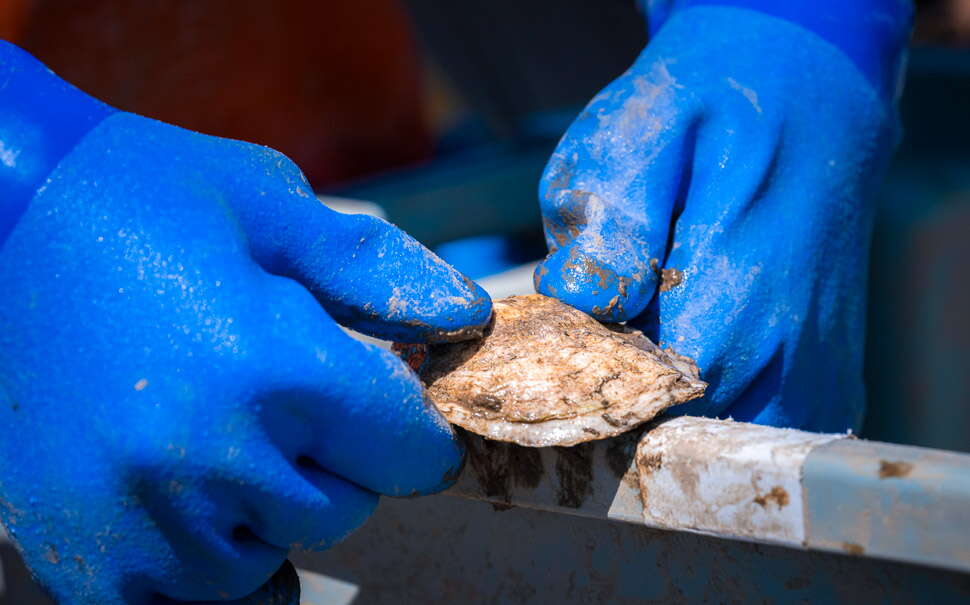
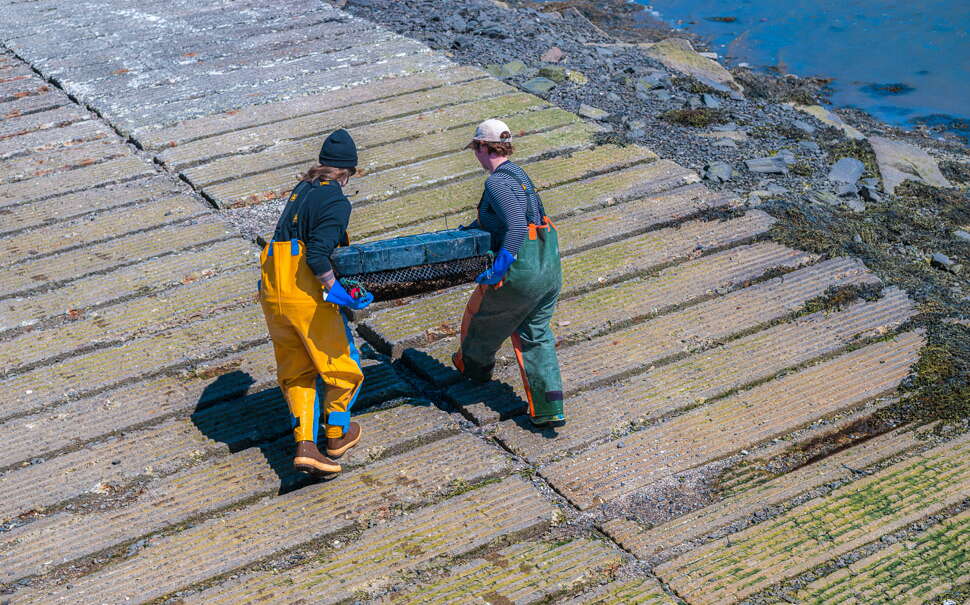
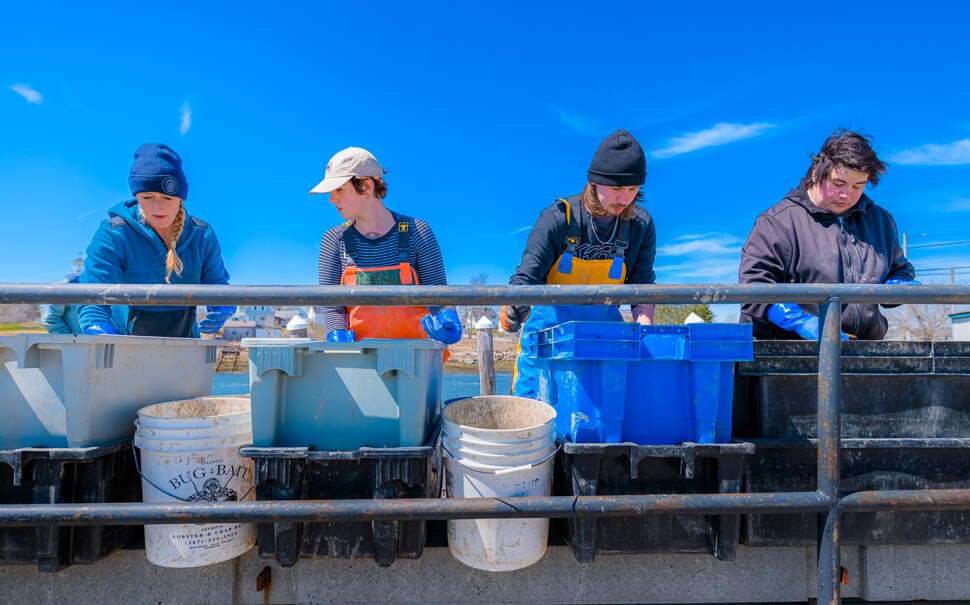
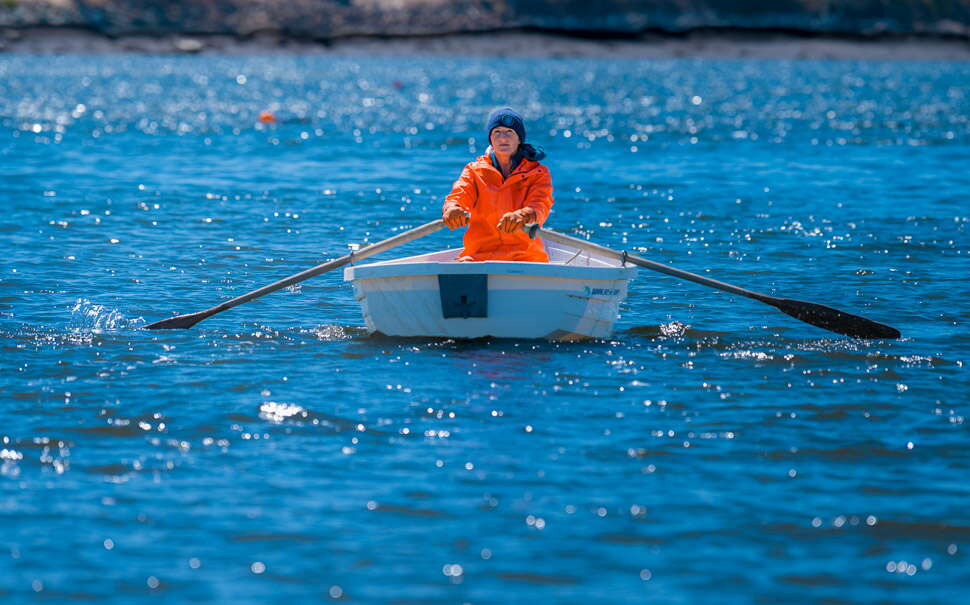
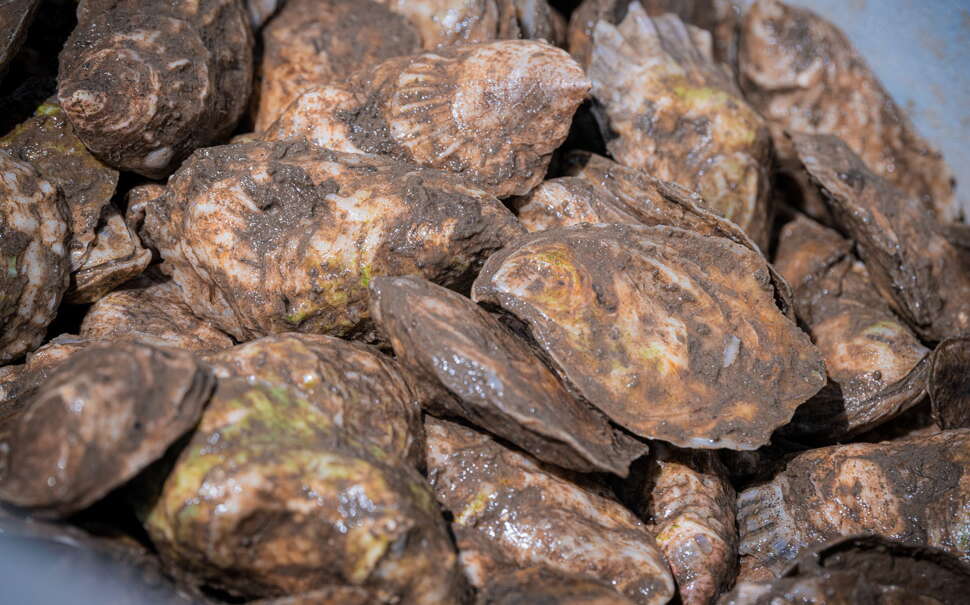
Mighty Aphrodite
Colder waters on the midcoast make for richer-tasting oysters, says Krista Tripp of Aphrodite Oysters. Tripp, shown in these photos sorting and culling with her three-person seasonal crew, migrates her oysters between three sites in progressively cooler waters as they grow from seeds to marketable size. The smallest, at 2 ½ inches, tend to be the biggest sellers, often sweeter and less meaty than the 3 ½- to 4-inch varieties. Tripp’s oysters take longer (three to four years) to grow due to the water temperatures in the Weskeag River, which flows into the Atlantic Ocean near South Thomaston.
“That’s what gives them a much better flavor profile, because they’ve been brining for a whole extra year more,” she says.
Tripp harvested 200,000 oysters in 2024 and, with plans to put in seeds for 350,000 this summer, is gearing up for greater output in coming years. Like many in the business, Tripp does not live by oysters alone. She also pilots a lobster boat.
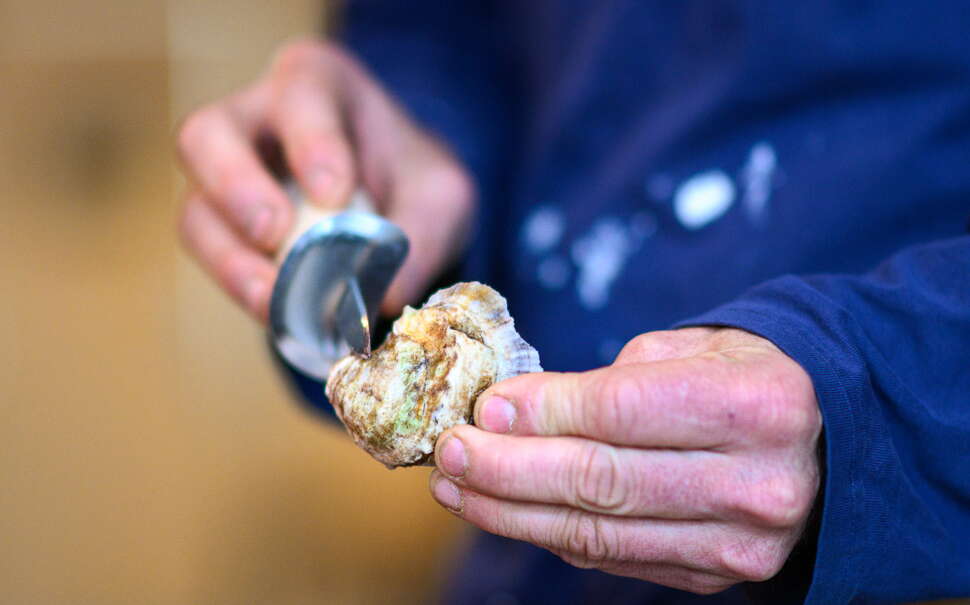

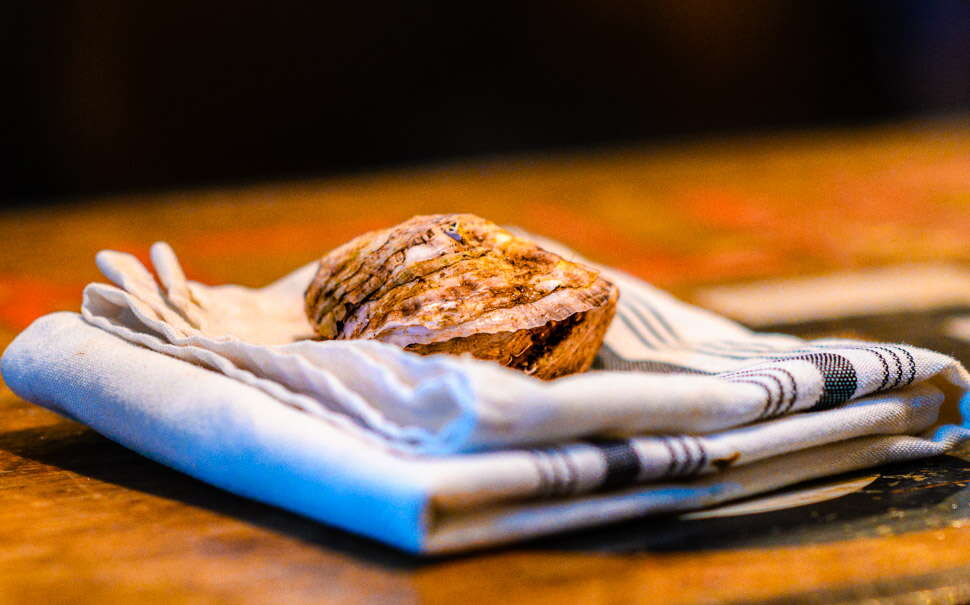
Back to school
Oysters may not be an acquired taste for everyone, but cracking them open without drawing blood while sipping a glass of bubbly is an acquired skill. The blade has to be inserted in the right place, at the right angle and with the right degree of torque.
In these photos of a shucking class offered by the Maine Oyster Co. at its Portland raw bar, John Herrigel gives a crash course in oysterology and slice-by-slice training to a group of locals and visitors. In this school, everyone graduates.
“We’ve never had any failures at all, we’re always able to get them to successfully shuck,” says Bryn Jerome, who goes by the title chief of shucks.
Occasionally, like prizes in old-time cereal boxes, a shell opens up to reveal a teeny-tiny pearl. “You find it, you keep it,” Jerome says.
More than 75 growers are affiliated with the Maine Oyster Co., which also operates a sales portal, conducts farm tours and caters private events.
About the photographer

Jim Neuger, a Cleveland native and Princeton graduate, worked as a print reporter and bureau chief in Germany and Belgium for Bloomberg, covering economics (the rise and near demise of the euro), politics (remember Helmut Kohl?) and war and peace (from the relative sanctity of the NATO pressroom). He enjoys riding horses and watching them race, and can name every Kentucky Derby winner since 1875. He and his wife Renee Cordes, deputy editor at Mainebiz, live with their cockatiel Kori in Cape Elizabeth. Some of Jim’s work is on display at www.jimletpix.com.
Mainebiz web partners
Related Content
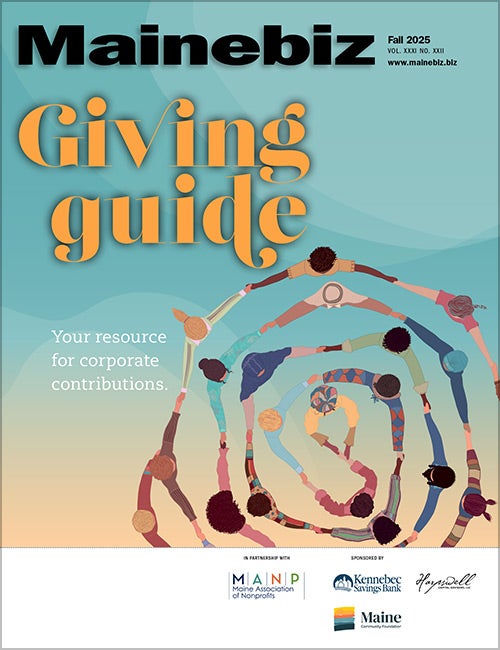
The Giving Guide
The Giving Guide helps nonprofits have the opportunity to showcase and differentiate their organizations so that businesses better understand how they can contribute to a nonprofit’s mission and work.
Learn More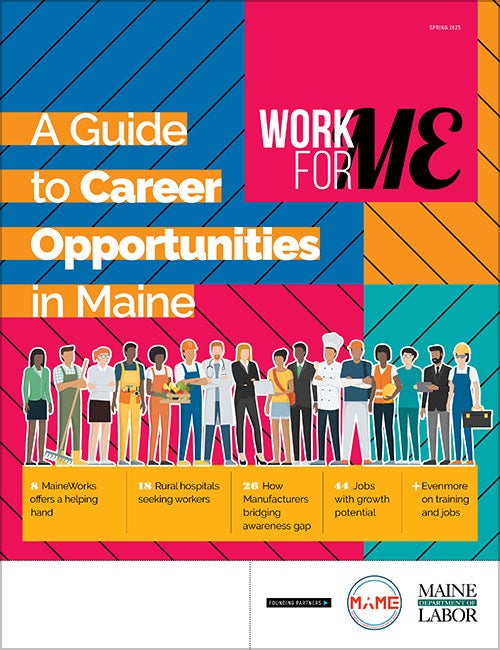
Work for ME
Work for ME is a workforce development tool to help Maine’s employers target Maine’s emerging workforce. Work for ME highlights each industry, its impact on Maine’s economy, the jobs available to entry-level workers, the training and education needed to get a career started.
Learn More
Groundbreaking Maine
Whether you’re a developer, financer, architect, or industry enthusiast, Groundbreaking Maine is crafted to be your go-to source for valuable insights in Maine’s real estate and construction community.
Learn more-
The Giving Guide
The Giving Guide helps nonprofits have the opportunity to showcase and differentiate their organizations so that businesses better understand how they can contribute to a nonprofit’s mission and work.
-
Work for ME
Work for ME is a workforce development tool to help Maine’s employers target Maine’s emerging workforce. Work for ME highlights each industry, its impact on Maine’s economy, the jobs available to entry-level workers, the training and education needed to get a career started.
-
Groundbreaking Maine
Whether you’re a developer, financer, architect, or industry enthusiast, Groundbreaking Maine is crafted to be your go-to source for valuable insights in Maine’s real estate and construction community.
ABOUT
NEW ENGLAND BUSINESS MEDIA SITES
No articles left
Get access now
In order to use this feature, we need some information from you. You can also login or register for a free account.
By clicking submit you are agreeing to our cookie usage and Privacy Policy
Already have an account? Login
Already have an account? Login
Want to create an account? Register
Get access now
In order to use this feature, we need some information from you. You can also login or register for a free account.
By clicking submit you are agreeing to our cookie usage and Privacy Policy
Already have an account? Login
Already have an account? Login
Want to create an account? Register

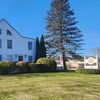
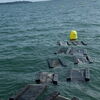






0 Comments